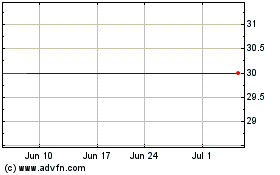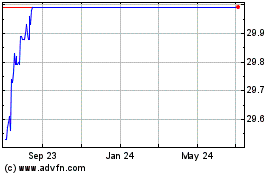By Austen Hufford and Annie Gasparro
U.S. companies are raising prices on everything from plane
tickets to paint, passing on higher costs for fuel, metal and food
to their customers after years of low inflation.
Clorox Co. said it raised prices in the latest quarter on such
products as cat litter, and Coca-Cola Co. as well reported higher
prices for the quarter. Other airlines, manufacturers and food
makers also have announced price hikes over the past week.
The higher prices have effectively ended a long period of low
inflation that led the Federal Reserve to keep short-term interest
rates near zero for years.
"We think 2019 will be more inflationary than we have seen
historically since the recession," Kellogg Co. Chief Executive
Steve Cahillane said in an interview Wednesday.
It is a tricky moment for the U.S. economy. Unemployment is at
the lowest point in decades, and economic growth is strong. Now
inflation is near the Fed's 2% target, but price rises could pick
up if pressure from labor shortages and tariffs intensify in a
still-robust economy. Alternatively, other factors could offset
these pressures, including the stronger U.S. dollar, which makes
imports cheaper.
Oreo cookie and Ritz cracker maker Mondelez International Inc.
plans to raise prices in North America next year. Chief Executive
Dirk Van de Put said in an interview Monday that consumers and
retailers in the region have become more amenable to paying
more.
"The consumer environment is strong," Mr. Van de Put said.
The rising costs companies face are various. Mondelez said price
hikes on some of its cookies and crackers are in response to rising
ingredient and transportation costs. Airlines are paying about 40%
more for jet fuel than a year ago. Trucking costs were up 7%
annually in September, as trucking companies passed along their own
higher labor costs. Private-sector wages and salaries in the
September-ended quarter rose 3.1% from a year earlier, the
strongest gain since 2008, the Labor Department said Wednesday.
Meanwhile, U.S. manufacturers are paying roughly 8% more for
aluminum and 38% more for steel than a year ago as the industry has
adjusted to tariffs the Trump administration levied on imports of
those metals. Also, a 10% tariff the administration imposed in
September on $200 billion worth of various goods from China is
weighing on businesses that buy those imports.
Steven Madden Ltd. said this week it was raising prices on
handbags and other products it imports from China and that it would
shift production to other countries to avoid the tariff. The shoe
maker said prices on goods made in China could rise up to 10% at
company-owned stores.
"These are all things that point to prices going up," said Diane
Swonk, chief economist at Grant Thornton. "We might see a pop of
inflation in the first quarter."
Sensing that consumers are getting used to higher prices, some
companies are also charging more to improve profits. Arconic Inc.
said it had widened operating margins on its rolled-aluminum
products by charging more as the tariff pushed up prices
overall.
Apple Inc. raised prices on new MacBook Air and iPad Pro
products by about 20% and 25%, respectively.
"This pickup in inflation is coming from strength in the
domestic economy," Barclays economist Blerina Uruci said. The bank
predicts core U.S. inflation, which excludes energy and food
prices, will reach a post-recession high next year.
At some point, higher prices could damp the economy's recent
strength. Investors worry that a pickup in inflation will prompt
the Fed to raise interest rates more quickly to prevent the economy
from overheating.
Rebekah Tull, an interior designer for Whiski Kitchen in Royal
Oak, Mich., said she is paying 15% more for Chinese-made quartz
countertops and 10% more for imported cabinets because of tariffs.
Higher supply costs added $500 to one client's $25,000 renovation
recently.
"It's going to be more of a challenge to get the looks they see
on Pinterest for their budgets," she said.
Businesses including Coke and major U.S. airlines have said
their higher prices aren't denting demand.
"The economy is healthy," Delta Air Lines Inc. Chief Executive
Ed Bastian said in September. "To the extent oil prices were to
continue to rise, we expect to be able to pass along the cost of
that."
Delta, JetBlue Airways Corp. and American Airlines Group Inc.
have all raised fares or fees to cover higher fuel costs.
Some smaller airlines say they can't risk alienating customers
with higher fares. Budget carrier Allegiant Travel Co. said its
passengers were more sensitive to price hikes than those of big
carriers. Allegiant is cutting some off-peak flying to trim
costs.
Paint makers Sherwin-Williams Co. and PPG Industries Inc. in
recent weeks said they would keep raising prices next year to cover
the steeper climb in costs for ingredients such as titanium
dioxide, a pigment used to make paint white. Sherwin-Williams
raised prices in its own stores by as much as 6% in October.
"Raw material inflation has been unrelenting and accelerating,"
Sherwin-Williams Chief Executive John Morikis said last week.
Some restaurant companies are raising prices even as they try to
attract customers with deals. McDonald's Corp.'s 2.4% same-store
sales growth in the U.S. in the third quarter was fueled by
higher-priced burgers. Brinker International Inc. said it raised
the price of the two-entrees-and-an-appetizer deal at its Chili's
Grill & Bar chain to $25 from $22.
The Habit Restaurants Inc. raised prices by 3.9% in late May.
The upscale burger chain beat sales expectations for the third
quarter, but the growth was driven entirely by price hikes, as
traffic fell by 3.4%.
Food makers had struggled earlier this year to raise prices
because supermarket chains and online grocery services insisted on
holding down prices as they fought for market share.
Kellogg Co. and Hershey Co. are using other tactics to make more
from their products.
Kellogg released a chocolate variety of its Thick & Fluffy
Eggo waffles and priced it 12% higher than similar products.
"The days of straight list-price increases are gone," Mr.
Cahillane said. "It would lead to a decrease in consumer
demand."
Hershey said it will sell candy in new packaging next year at
higher prices per ounce.
Chief Executive Michele Buck said in an interview last week that
retailers are more willing to raise prices now because consumer
spending and economic growth have risen.
"Retailers understand that when costs go up, something has to
give," she said.
Cheryl King, a 50-year-old personal shopper in Chicago, said she
has noticed slightly higher prices on some groceries, especially
the gluten-free and organic foods she buys for her two kids. But
she said she and her husband, a surgeon, haven't changed their
shopping list.
"I try to look for sales or coupons, but we're doing OK. We're
not pinching pennies," she said.
Julie Jargon contributed to this article.
Write to Austen Hufford at austen.hufford@wsj.com and Annie
Gasparro at annie.gasparro@wsj.com
(END) Dow Jones Newswires
October 31, 2018 14:13 ET (18:13 GMT)
Copyright (c) 2018 Dow Jones & Company, Inc.
Arconic (NYSE:ARNC)
Historical Stock Chart
From Mar 2024 to Apr 2024

Arconic (NYSE:ARNC)
Historical Stock Chart
From Apr 2023 to Apr 2024
